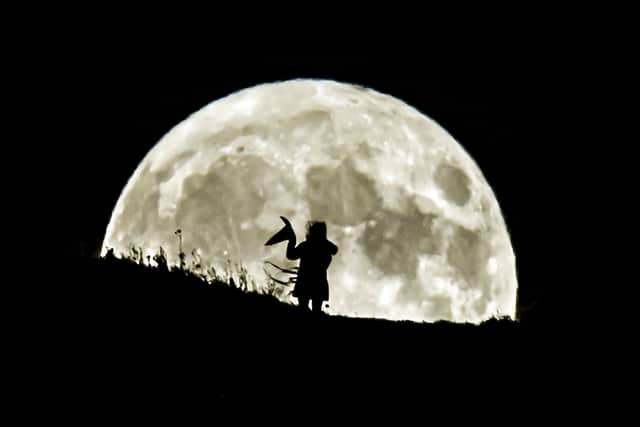Census sees a rise in the number of witches living in West Northamptonshire
and live on Freeview channel 276
There has been a rise in the number of witches living in West Northamptonshire, according to the latest census figures.
As Halloween looms, a look at the most recent census figures shows there are a surprising number of folks who identify as witches, pagans, and even Satanists across England and Wales.
Advertisement
Hide AdAdvertisement
Hide AdIn West Northamptonshire, 95 people selected Wicca as their religion in Census 2021. The religion developed in England during the first half of the 20th century with its name deriving from the Old English 'wicca' and 'wicce', the masculine and feminine term for witch.


The number of people identifying as wiccan is up from 76 in the 2011 census.
Across England and Wales, over 12,800 people opted for Wicca as their religion – a slight jump from 11,800 in 2011.
Separately, the number of people selecting Witchcraft as their religion has fallen from nearly 1,300 in 2011 to under 1,100 in the recent census.
Advertisement
Hide AdAdvertisement
Hide AdThe figures show three people selected Witchcraft as their religion in West Northamptonshire in 2021.
While the witch population has not soared, there has been a 30% rise in pagans - from 56,600 people in 2011 to over 73,700 two years ago. In West Northamptonshire, 653 people said they were pagan.
Halloween, which has roots in paganism, originated from the Celtic celebration of Samhain that marked the end of summer and the beginning of the winter. Celts believed the boundary between the worlds of the living and the dead became blurred on this night.
Celtic priests would build bonfires, where the people gathered to burn crops and animals as sacrifices to the Celtic deities.
Advertisement
Hide AdAdvertisement
Hide AdEventually, the influence of Christianity spread into Celtic lands and All Soul's Day and All Saint's Day – or All-hallows – was created, incorporating some of the original pagan traditions. To celebrate the days, people would light bonfires, throw parades and costume as saints, angels and devils.
Speaking of the devil, Satanism is also on the rise across the nations. Nearly 5,100 people identified as Satanists in the recent census – more than doubling from 1,900 a decade prior.
Despite the name, not all Satanists believe in a literal Lucifer. Instead, it is often a metaphor for questioning authority and rejecting mainstream religion.
In West Northamptonshire, 34 people said they were Satanists.